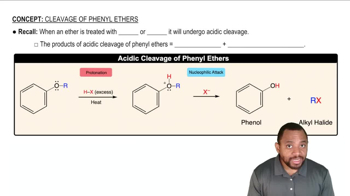Draw the 13C NMR spectrum you would expect to see for each of the molecules shown.
(c)
 Verified step by step guidance
Verified step by step guidance Verified video answer for a similar problem:
Verified video answer for a similar problem:



 4:m
4:mMaster 13C NMR General Features with a bite sized video explanation from Johnny
Start learning